By David H. Lippman
The Battle of Berlin began with what a German colonel called “a dull, continuous roar of thunder from the east.” The Soviet bombardment was so immense in Berlin’s eastern suburbs, houses shook, pictures fell from walls, and telephones rang. Berlin civilians heard the rumbling, saw the shaking buildings, and knew the hour had come. On ration queues, women and girls listened “in dread to the distant sounds of the front,” and asked each other if the Americans would get to Berlin ahead of the Soviets.
It was April 16, 1945. The rumbling was the sound of 8,983 Soviet artillery pieces, up to 270 guns every kilometer, hurling a stockpile of seven million shells (1.2 million on the first day alone) at the German defenses on the Oder-Neisse River line. The last and most consequential battle of World War II in Europe was starting—the battle for Berlin.
After a breather to finish off the “Oder balcony” in East Prussia and to bring up supplies, the Soviet Army was finally ready to attack Berlin and end the war. To Russia’s tyrannical and paranoid ruler, Josef Stalin, nothing mattered more than beating the British and American forces to Berlin. Not only did his prestige demand it, so did vengeance for the bloody trail of atrocities and destruction sown by the Germans all the way to Moscow and Stalingrad.
“Who will take Berlin? Us or the Allies?” Stalin asked his two top commanders, Marshal Georgi K. Zhukov, commander of the 1st Belorussian Front, and Marshal Ivan Koniev, head of the 1st Ukrainian Front, who faced Berlin, in a Moscow conference on April 1.
“We will, and before the Allies,” answered Koniev.
“So that’s the sort of men you are,” responded Stalin, who promptly gave them their orders—Zhukov would drive on Berlin from the center and north, while Koniev hit Berlin from the south, enveloping the immense German capital in a gigantic pincer movement. To achieve this victory, Stalin was massing 2.5 million men, 41,600 guns, 6,250 tanks, and 7,500 aircraft.
The Soviet Army was by 1945 a well-oiled war machine, lavishly equipped with powerful T-34 and JS tanks, superior to most of their German counterparts and fairly easy for the mechanically challenged Soviet tank crews to operate and maintain. Artillery was still Russia’s “God of War.” Infantry and tanks cooperated with skill, resolution, and aggressiveness. The Soviets understood the importance of surprise, maneuver, and commitment of reserves. They did not rely on numbers alone to win battles.
But the Soviets had weaknesses. While ammunition was plentiful, food, spare parts, and even uniforms were in short supply. Soviet troops were often lean and hungry, expected to live off the land. Much of their rations and transport were American Lend-Lease.
Most importantly, the Army was poorly disciplined. Despite the toughness of Soviet political officers, Soviet troops in all echelons had a fondness for theft and rape, which was inspired by the harsh propaganda of Stalin’s political writers, who hammered down the idea that the invasion of Germany would be the wreaking of Soviet vengeance—Germany was not to be defeated, but despoiled.
Nothing Left to Lose
Zhukov’s assault on the city was the centerpiece of the Battle of Berlin, and the general who “never lost a battle” planned this one poorly. He showed little of his usual verve and flexibility. Facing German troops dug in against him on the Seelow Heights, he deployed 143 searchlights to blind the defenders, one every 200 meters. When the searchlights snapped on, the Germans shelled them, killing many of the lights’ female operators.
The German defense was headed by one of that nation’s sharpest minds, Col. Gen. Gotthard Heinrici, son of a Lutheran pastor, married to a “mischlinge,” a half-Jew. Only Heinrici’s ability as a defensive specialist kept him on the Wehrmacht’s payroll, as boss of Army Group Vistula, which was actually defending the Oder.
Heinrici planned his defense with great care. He had close to a million men to defend against the Soviets, counting training units, Hitler Youth, police, and Volkssturm, equipped with 10,400 tanks, 1,500 guns, and 3,300 aircraft. The Soviets outnumbered him badly. Worse, the German war machine had been ground down by years of defeat and retreat. Tanks were short of fuel, artillery short of shells, and many soldiers had gone unpaid for months. Their morale was worn out by the stream of defeats, refugees clogging roads, letters (when mail came) from home that their houses had been destroyed or hometowns occupied by Allied forces.
Yet they fought on. Some did so with the courage of desperate and fanatical men who believed in Hitler. Others were members of SS foreign contingents, like the tough Nordland Division, made up of Scandinavian Nazis—Swedes, Danes, and Norwegian renegades—who had thrown in their lot with Hitler. Another such outfit was the SS Charlemagne Division, composed of Frenchmen. They fought with the courage of men who had nothing left to lose. Capture meant a treason trial back in their homeland, and escape was impossible. So these mercenaries and opportunists—including a scattering of renegade Britons from the 50-strong British Free Corps—also fought on.
The Germans also had some of their usual strengths: mobility, quick-thinking field commanders, an astonishing ability to regroup under pressure, and immense Tiger tanks that hurled 88mm shells and could withstand heavy bombardment.
There were other incentives for Germans to fight this last battle with determination. Josef Goebbels’s propaganda continued to promise miracle weapons to turn the tide of battle. German troops feared the destruction that would rain down upon their homes if the Soviets conquered their Fatherland. SS flying “courts-martial” and the military police effectively patrolled the rear areas. Anyone suspected of being a deserter would get a quick drumhead court-martial, inevitably followed by a hanging.
The picture was bleak. The German divisions that stood on Heinrici’s main line of resistance on the Neisse River and the Seelow Heights were not the goose-stepping legions that had terrorized Europe in 1940. There were contingents of German naval personnel drawn from immobile surface ships and bases, Luftwaffe ground crews and pilots without planes, personnel from Army training schools, and the scores of poorly equipped Volkssturm units, made up of locally drawn old men and Hitler Youth, often armed only with one-shot disposable Panzerfaust antitank rocket launchers instead of rifles. Many had no uniforms and no weapons, and less training.
A Typical “Morning Concert”
With this, Gotthard Heinrici faced Zhukov’s attack. At first, things went well for the Germans. Beyond shooting the lights out, the searchlights themselves were ineffective because their dazzle reflected back off the smoke and dust of the Soviet bombardment. Order and counterorder to turn them on and off soon followed. Overcast skies and rain hampered both sides.
Even so, the bombardment was horrific. The Hitler Youth and trainee youngsters at first thought it was a typical “Morning Concert,” but the old hands soon recognized that this was the long-awaited big offensive. Gerd Wagner of the 27th Parachute Regiment said, “In a few seconds, all my 10 comrades were dead.” Wagner himself regained consciousness in a smoking shell crater and was barely able to escape. Farther back, an SS panzer battalion commander peered through his pericscope and saw “in the field of view the eastern sky was in flames.”
The Soviet bombardment churned up the Seelow Heights, leaving both physical and moral destruction in its wake. An SS war correspondent found a dazed soldier wandering in a wood, having tossed his rifle. This was his first experience of the Eastern Front, he said. He had spent the war as a barber in an officers’ hotel in Paris.
Still, Zhukov had trouble. He sent his men storming across the Oder in American amphibious DUKWs, driven by female soldiers. Behind the Lend-Lease vehicles came all kinds of ordinary boats, many of which leaked. Under heavy fire, the boats came ashore and the Soviets advanced through minefields, making little progress. By midday, the troops were wallowing in heavy mud and German shelling.
The Germans were not doing well either. Joseph Goebbels made a passionate speech on the German radio that the new storm of Mongols would break itself against the Oder walls, but Berliners, who could read maps, got into longer lines at food shops to fill their larders as quickly as possible. Heinrici wanted to counterattack, but Adolf Hitler, in a typically loony decision, had taken away three of his panzer divisions and sent them to Czechoslovakia. At the German Army’s “holy of holies,” the command bunkers at Zossen, Chief of Staff General Hans Krebs kept going on shots of vermouth from a bottle he kept in his office safe, struggling with broken communications to the front and desperate requests for information from the rear.
At noon, a frustrated Zhukov sent his tanks in, but they struggled against the deadly Panzerfausts, the muddy ground, and the chaotic bridgehead, a nightmare for traffic control.
At 3 pm, Zhukov reported to Stalin. “So you’ve underestimated the enemy on the approaches to Berlin, but you’re still on the Seelow Heights. Things have started more successfully for Koniev,” Stalin said. Zhukov bellowed at his Army commanders, who bellowed up the line and down the chain of command, calling for more attacks.
The problems went on. Soviet airmen bombed their own troops when they saw the wrong flares rising up from the ground. Artillerymen shelled their own troops. Medical services were completely overwhelmed, with wounded men lying without treatment for up to five hours. The 27th Guards Rifle Division’s casualty clearing station had only four operating tables. Medical personnel had such a horrific time that some gave up the profession after the war.
“The God of War is Thundering Very Nicely Today”
Koniev’s assault had indeed been more successful. His plan was to rely on artillery—249 guns per kilometer—and the 2nd Air Army to batter the German defenses for 145 minutes, twice as long as Zhukov’s bombardment. Instead of searchlights, a smokescreen would blind the German defenses.
“We had nowhere to hide,” said Corporal Karl Pafflik, a German who was captured after the assault. “The air was full of whistling and explosions. We suffered unimaginable losses. Those who survived were rushing around in trenches and bunkers trying to save themselves. We were speechless with terror.”
“The god of war is thundering very nicely today,” said a Soviet battery commander.
The Neisse River was shallower than the Oder, and Koniev’s men were able to cross simply by swimming the river or wading across fords, weapons over their heads. As soon as the Soviets hit the far bank, they brought up 85mm antitank guns for immediate fire support.
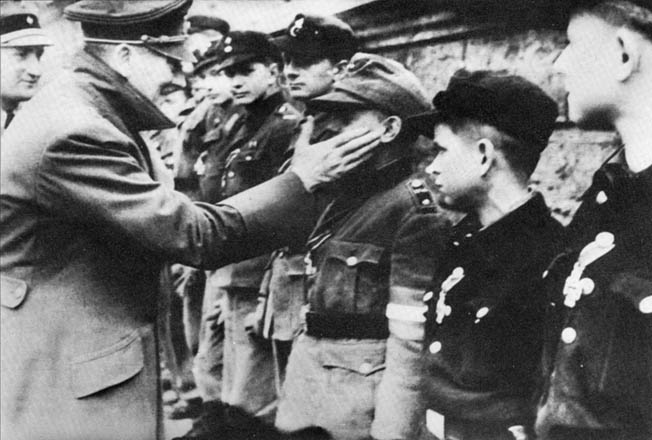
The Germans were stunned by the weight of Koniev’s bombardment. Many were hopelessly demoralized. A deserter from the 500th Penal Regiment told his captors, “The only promise Hitler has kept is the one he made before coming to power. Give me 10 years and you will not recognize Germany.” Others complained that they had been lied to by their officers, with promises of V-3 and V-4 rocket weapons.
Once Koniev’s men secured cables over the river, they ferried over T-34 tanks armed with 85mm guns to support the infantry. The 1st Ukrainian Front picked out some 133 crossing points in the main attack sectors. By the end of the first day, Koniev would be pleased, while his rival Zhukov was furious. Koniev’s only complaint was that evacuating wounded was “unbearably slow.”
Keeping Soldiers on the Front
That evening at 9 pm, Stalin cut more orders, setting the border between Koniev and Zhukov. The line on the chinagraph map shot out from the Neisse River from Guben to the town of Lubben, and then stopped. It was clear that Stalin was setting up Koniev and Zhukov to race for Berlin, and the winner would get the spoils.
So a race was on between two rivals. Zhukov was the better known of the two, having won victories over the Japanese at Khalkin-Gol in 1939, the Germans at Moscow in 1941, and Stalingrad in 1942. The former furrier’s apprentice and cavalryman had masterminded these triumphs and been celebrated for them. Koniev, by comparison, had not commanded troops in the defense of Moscow or Stalingrad, but served well in relatively obscure assignments, rising to take command of the 1st Ukrainian Front and gaining a reputation among Soviet leadership as a hard charger.
Next morning saw overcast skies and drizzle give way to clearer weather on the Seelow Heights, and the Soviets brought down artillery and airpower again. The Germans took heavy casualties, which overwhelmed their medical stations. Their triage policy was to care for those most likely to return to combat first. A stomach wound meant death—surgery required far too much time. Officers wandered through medical areas, sending walking wounded back to the front.
At checkpoints, German military police, known as chain-dogs, or kettenhunden, for the gorgets they wore, searched columns of refugees for stragglers and deserters, sending them back to the front, often to stiffen newly deployed groups of Hitler Youth, some of them as young as 15.
Seelow Surrounded
Meanwhile, Zhukov and his troops pressed on. German 88mm antiaircraft guns and tank-hunting infantry with Panzerfausts caused more Soviet losses, but through determination, the Soviets surrounded Seelow. Key to the German defense was the 9th Parachute Division under General Bruno Brauer, a Crete veteran who smoked cigarettes through a holder. Some of the 9th Division’s men included veterans from Otto Skorzeny’s legendary commando units, but others, mostly replacements, were Luftwaffe ground crews.
The 9th had a rough day on the 17th. A regimental commander was killed, the bombardment and assault panicked many of the men, and the Luftwaffe airmen, most of whom had never seen action, fled the battlefield. Brauer himself suffered a nervous collapse and had to be relieved of what was left of his command.
Still, the Germans tried to counterattack—the 101st Corps, a collection of young trainees and officer candidates, went in, but the Soviets had placed wire-sprung mattresses from nearby houses on the sides of their tanks. The panzerfaust shells simply bounced off. The Germans took fearful casualties. The Potsdam Regiment found that there were only 34 boys left on their feet after its battle.
Buoyed by a false report of peace negotiations with the British from Foreign Minister Joachim von Ribbentrop, 9th Army commander General Theodor Busse told his men, “Hold on for two more days, then everything will be sorted out.”
But the reality of the Battle of Berlin was a slowly disintegrating German defense. The Luftwaffe sent in Focke Wulf FW-190 fighter-bombers to attack pontoon bridges across the Oder, claiming that two of the pilots destroyed a bridge by diving their damaged planes into the pontoons. In actuality, these desperate tactics achieved nothing. The Soviets had 32 bridges across the Oder.
“Turn the Tank Armies Toward Berlin”
Koniev’s tanks also continued to attack, racing for the Spree through burning pine forests. All day the Soviets crashed through the forests, around lakes, through marshes, heading northwest to Berlin. When Koniev reported that evening to Stalin, the Soviet leader told Koniev, “With Zhukov things are not going so well yet. He is still breaking through the enemy defenses.” Stalin suggested that Zhukov attack through Koniev’s bridgehead.
Koniev instead suggested that his army group could head for Berlin itself and do the job.
“Very good,” said Stalin. “I agree. Turn the tank armies toward Berlin.”
In Berlin itself, the offensive was greeted with a flurry of stirring exhortations from Goebbels, who called for resistance to the last and warned, “Any German who offends against this self-evident duty to the nation will lose his life as well as his honor.”
In reality, Heinrici faced more attacks with tanks lacking fuel, guns lacking shells, and troops lacking food. Dawn on the 18th saw a red sky on the eastern horizon as the day began with massive Soviet air attacks and artillery barrages. Zhukov was furious, knowing that his rival Koniev had orders to advance on Berlin.
Zhukov’s armor resumed the offensive and ran back into the usual German ferocity and Panzerfausts until 9:40 am, when the Soviet bludgeon finally broke through, sending the remains of the 7th Panzer Division, Field Marshal Erwin Rommel’s old command, scattering. By mid-afternoon, the defending 9th Army was about to be split in two. Zhukov had the Seelow Heights at a cost of 30,000 dead, for a German loss of 12,000.
Preparing a New Defensive Line
To the south, Koniev’s armor fended off a counterattack on its left flank but kept pushing on against declining resistance.
The situation was increasingly desperate for the Germans, and they began taking even more desperate measures. First, Hitler ordered all Volkssturm units in Berlin to join the 9th Army to form a new defensive line. Only 10 battalions and some antiaircraft guns could actually be sent, but that left the city with only its immobile flak guns for defense.
Next, Artur Axmann, head of the Hitler Youth, offered his 15-year-old boys to General Hellmuth Weidling and the 56th Panzer Corps, to fight with Panzerfausts. Weidling exploded at the idea of committing 15-year-olds and even younger boys to the battle, and Axmann agreed to retract the order. Even so, Nazi bloodlust rolled on. At Plotzensee Prison, the Gestapo executed 30 political prisoners.
With the Soviets on the offensive, the 9th Army split into three directions. The 9th Parachute Division tried to regroup but failed. The paratroopers fled the scene, giving their ammunition to the arriving SS Nordland Division troopers.
On Reichstrasse 1, the main highway leading east from Berlin, refugees piled west, as the Nordland Division headed east. “Ivan is right behind us!” the refugees and fleeing troops yelled. SS troops and military police manned roadblocks to search for deserters, shooting and hanging them on the spot. To add to the hypocrisy, while SS men hanged deserters the SS formations were told to be ready to fall back to Schleswig-Holstein, near the Danish border, where they could escape the advancing Soviets.
All along the highways on April 19, Soviet aircraft pummeled anything German that moved, civilian or military. German troops from the 101st Corps fled through Mecklenburg, leaving behind all their equipment. The corps, made up of units from trainee and officer candidate battalions, was stunned by the sheer ferocity of the Soviet offensive. Stragglers formed into ad hoc battlegroups to fight briefly for a crossroads or village, then fled again.
Hitler’s Birthday in the Bunker
All these disasters had little impact on Adolf Hitler, now directing the war from his bunker in the Reich Chancellery grounds, surrounded by flunky generals and obedient secretaries. On April 20, the Führer marked his 56th birthday amid sunny skies and the next-to-last American air raid on Berlin.
With the postal system collapsing like the rest of Germany, there were few gifts for Hitler from his subjects, but the Nazi elite massed one last time to honor their leader. Luftwaffe chief Hermann Göring emptied Karinhall, his country house north of Berlin, of art treasures, then pressed the plunger to detonate the buildings, which had all been wired by Luftwaffe engineers. Without looking back, he strode to his enormous car to head to the Reich Chancellery.
The party was a grim one. Except for Propaganda Minister Goebbels and Hitler’s personal secretary Martin Bormann, all the Nazi elite were planning escapes. Göring was headed for Bavaria, SS Reichsführer Heinrich Himmler for Schleswig-Holstein, technocrat Albert Speer to the German Alps. Hitler accepted a sack of money from the German Army’s ordinary soldiers and only noted that it was not as heavy as in years past.
At the daily staff conference, the big issue was what to do with a Germany about to be split in two. Hitler announced he would stay in Berlin. After the meeting, the leadership came up with excuses to flee Berlin, while Hitler was recorded on his last newsreel, inspecting a detachment of Hitler Youth, who had received Iron Crosses for knocking out Soviet tanks. The ailing Führer, holding his shaking left arm behind his back, walked down the flanks, patting boys on the cheeks while his aides presented the medals. That evening, Hitler’s mistress, Eva Braun, presided over a champagne party to celebrate Hitler’s birthday in the bunker.
“Break in to Berlin First and Raise the Banner of Victory”
Outside, in the increasingly ruined Berlin, housewives queued for food and news from the one-page newspaper Goebbels put out. Even that was not helpful. It used circumlocutions to explain where the fighting was taking place. That day, Berliners were supposed to receive “crisis rations” of bacon, sausage, rice, dried peas, beans, and lentils. With water, gas, and electricity services nearly broken down, Berliners were now cooking half-rotten potatoes over a tiny fire enclosed by three bricks on their balconies. Offices closed as shellfire and Soviet air bombardment were making it impossible for people to move through the streets. Everyone waited for the end.
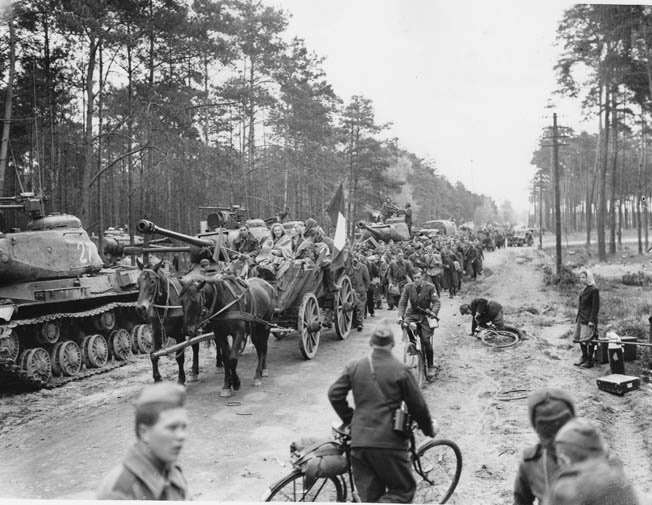
At the front, Zhukov’s gunners finally had the range of Berlin and opened fire on the already bomb-blasted city. He gave his 1st and 2nd Guards Tank Armies an order: “Break in to Berlin first and raise the banner of victory.” He wanted to be there by dawn on the 21st. His tanks did not get there until the afternoon.
Meanwhile, Koniev continued a steady advance, hurling his armies across the Spreewald, but not fast enough for Koniev. “You are again moving like a hose,” Koniev signaled one commander.
By now there was no front line. Ninth Army’s men were holding various points to slow or stop Soviet advances. At Werneuchen Airfield, the flak battery had to depress its fixed 88mm guns to take on the ground targets, to little avail. All roads heading west were blocked by panic-stricken refugees. Weidling ordered his Nordland Division, now mingling with Hitler Youth and 18th Panzergrenadier assets, to counterattack, but the Germans were badly mauled. The Hitler Youth were trapped in a forest that caught fire. The Germans retreated.
At one point, a solitary King Tiger tank stabilized the situation by blasting open two T-34s, halting the Soviet advance. The Nordland Division’s Scandinavian nurses were caught in the retreat with their men. One nurse found her Waffen SS lover among the badly wounded and held his head in her lap until he died from his wounds.
German discipline broke down in the retreat. Troops that had not been fed for days broke into abandoned houses and gorged themselves on whatever they could find. Others collapsed into beds in farmhouses, exhausted, in boots and muddy uniforms, to get their first sleep in days. One Hitler Youth slept through a pitched battle. Officers had to restore order at pistol point. With the disintegration, even the SS flying court-martial teams were overwhelmed. Some execution teams themselves deserted. A prisoner told his Russian interrogators that there were about 40,000 deserters hiding in Berlin even before the Soviet advance.
The 56th Panzer Corps regrouped and retreated again, this time to Berlin’s western suburbs, hooking up with the remains of 101st Corps, holding the city’s northern side. At Bernau, the Soviet 47th Army hit the last line before Berlin and found the defenders unable to cope. After firing off a victory salute at the city, the 47th Army and 2nd Guards Tank Army pushed inside the autobahn ring, winning the race for the city during the Battle of Berlin.
The Last Plane Out of Tempelhof Airport
On the 21st, Berlin’s defense headquarters was besieged by big shots, all demanding authorization to leave Berlin before it became surrounded. Goebbels had ordered that “no man capable of bearing arms may leave Berlin” without a permit, and all the “Golden Pheasants” who ran the Reich or lived its high life were fleeing. Lt. Gen. Hellmuth Reymann, who commanded Berlin, signed more than 2,000 such passes, quite happy to be rid of the useless mouths and armchair warriors.
That morning saw the final Allied air raid of the war and its replacement with the first heavy Soviet shelling of the city. Hitler was astonished that the Soviets could be close enough to bombard central Berlin with guns.
Casualties were heavy as Berliners were queuing up for crisis rations or water at pumps. Crossing a street now turned into a life-threatening ordeal. German families buried their valuables in yards and basements. The German Trans-Ocean News Agency and the Reichssender Berlin both shut down. So did the telegraph office, for the first time in its 100-year history. The last message was from Tokyo, reading, “Good luck to you all.”
The last plane left Tempelhof Airport, carrying nine passengers to Stockholm. Berlin’s 1,400 fire companies were ordered to the west to sit out the battle and survive. Gas, water, and electrical delivery broke down. Two operations continued: the meteorological station in Potsdam did not miss a day during 1945, and 11 of the city’s 17 breweries, engaged by government decree in “essential” production, went on making beer.
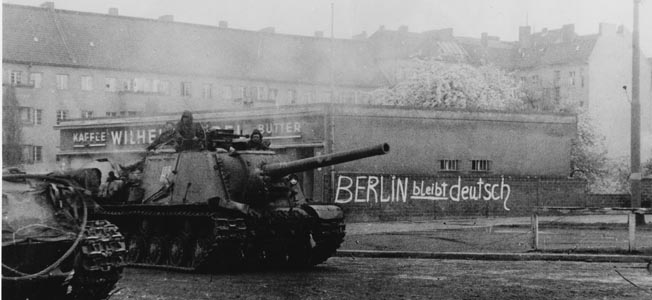
With law and order breaking down, civilians turned out to loot—breaking into stalled freight trains in marshaling yards, markets, and even department stores—emerging with all manner of foodstuffs, ranging from canned apricots to chocolate. For hungry and desperate Berliners, it was a bonanza. Stores sold their goods at bargain basement prices, knowing that the money would soon be worthless and the Soviets would loot anything left behind. Those who could not loot cut up dead horses that lay all over Berlin’s streets for the only source of marginally fresh meat left in the dying city.
A City Without a Commander
Ignoring realities, Hitler ordered the 9th Army to hold a line that was disintegrating. The 56th Panzer Corps continued to retreat along roads lined with corpses left from Soviet strafing attacks.
Now the Soviets moved to encircle Berlin, determined to crush it before the Americans—who had stopped on the Elbe River—could arrive. Stalinist paranoia was such that even though the American offensive had stopped at the Elbe, he was convinced the Americans were about to enter beleaguered Berlin.
On Berlin’s eastern side, Zhukov’s troops lined up to attack south toward the Spree River. On the southern side, Koniev’s tanks clattered into one of the most sacred places in the German Army, the Oberkommando Wehrmacht’s headquarters at Zossen. They found the two complexes, Maybach I and Maybach II, almost completely intact, with three sober and one drunken caretaker there to give a guided tour. The leading Soviet soldiers inspected the mass of bunkers, generators, plotting maps, ringing telephones, and clacking teleprinters, which had given orders to the German Army when it stood triumphant from the Pyrenees to the North Cape. When a phone rang, a German officer at the other end asked, “What is happening?”
“Ivan is here,” the Russian retorted. “Go to hell.”
Back in Berlin, Hitler studied his maps and ordered the 3rd SS Panzer Corps to counterattack, ignoring the fact that it consisted of a few battalions and some tanks, all already allocated to the 9th Army. On paper, 3rd SS Panzer Corps was three elite divisions, and paper was what Hitler cared about, not reality. “Whoever throws his last battalion into the struggle will be the winner,” Hitler said, quoting Frederick the Great.
General Kurt Steiner, who commanded the corps, was dumbfounded by the order, particularly that the penalty for failure to attack was execution. His total forces consisted of six battalions, some from the 4th SS Police Division, the 5th Panzer Division, and the 3rd Navy Division. “The Navy men I can forget about,” Steiner told Heinrici. “I bet they’re great on ships, but they’ve never been trained for this kind of fighting. I have hardly any artillery, very few panzers, and only a few antiaircraft guns. I’ll tell you what I have: a completely mixed-up heap.” He could not attack anyway, being hard pressed by Soviet forces.
That evening, Hitler fired Reymann as commander of Berlin, then appointed an obscure Colonel Ernst Kaether, promoting him straight to the rank of lieutenant general. The next day the appointment was cancelled. Berlin did not have a commander as the Soviets arrived in the suburbs.
Crumbling German Supplies and Communications
Zhukov’s forces arrived early on the 22nd, the original target date to capture Berlin. They did liberate hordes of French prisoners at Oranienburg, who waved tri-colored flags and set off through the lines to return home. Koniev’s men continued to seal up the ring around southern Berlin, reaching the Teltow Canal, the southern rim of the defense line. A huge Wehrmacht ration store stood on the north bank of the canal, but the administrator refused to pass out the food to the exhausted troops because “a regulation issue certificate had not been filled out.” He set fire to the food instead.
As Koniev’s men advanced, they searched through civilians, often finding them to be German soldiers who had concealed their uniforms. They also began the ugly process of raping women and looting homes, carrying off furniture, bedding, and even light bulbs.
That same day, two councils of war were held on the German side. First, Weidling polled his commanders and all wanted to withdraw, either south to hook up with what was left of the 9th Army, or in the Nordland Division’s case, north to Steiner’s 3rd Corps. But there was no way out of defending in the Battle of Berlin. Weidling’s troops were exhausted—filthy, bearded, bloodshot-eyed men who had not even seen their iron rations of processed cheese and hard bread in a week. They were living on tins of pork they found in abandoned houses.
The 9th Army was in little better shape, with men moving singly or in small groups, no organized formations, vehicles all out of gas. German communications were so bad that Army Group Vistula knew nothing of the Soviet advance.
Operation Seraglio
The second major council of war took place in Hitler’s bunker that day, with the Führer demanding news of Steiner’s counterattack. At noon he was told that no counterattack had taken place. Hitler was furious and went into a massive tantrum. The war was lost, he told his terrified staff. It was the worst such display the staff had yet seen, and it ended with Hitler saying he would stay in Berlin to the end and then kill himself. The aides tried to buck up their leader’s spirits and sent for Goebbels. He emerged from the discussion to announce that he was moving his wife and six children into the bunker to stay with Hitler to the end.
Later, Hitler cooled down and came up with yet another solution—Lt. Gen. Walter Wenck’s 12th Army, standing on the Elbe against the Americans. With the Yanks no longer moving, it would be disengaged and head northeast to hook up with the 9th Army’s fleeing remnants and save Berlin. Hitler gave written orders to his top flunkies, who took advantage of the orders and the situation to leave Berlin for good.
Operation Seraglio began immediately, with secretaries, doctors, and other aides fleeing to Berchtesgaden by air, while other members of Hitler’s inner circle began burning his papers. Despite the destruction and shellfire raging in the streets above, the bunker was not short of good food and alcohol. Those still trapped in the bunker by duty or choice soon saw discipline get replaced by drunkenness, dejection, and self-pity, from Hitler on down. Everyone was just waiting for Hitler to kill himself.
On the 23rd, the Soviets ramped up their bombardment in the Battle of Berlin by hauling in 600mm siege guns. Their targets were the three massive armored flak towers in downtown Berlin, which were also being used as shelters for thousands of people who had lost their homes to earlier bombardments. A woman diarist noted reports of a deserter being hanged at the other end of a U-Bahn tunnel and young boys amusing themselves by twisting the corpse round and making it spin back.
The same diarist, searching for coal, was horrified by the sight of “soft-faced children under huge steel helmets … so tiny and thin in uniforms far too large for them.” She saw this use of children as a form of abuse, and a “symptom of madness.”
Weidling’s Command
Meanwhile, Field Marshal Wilhelm Keitel, cut loose from the Führerbunker, hand delivered Hitler’s written order to Wenck for the big attack to liberate Berlin. Wenck knew the order was idiotic but saw an opportunity to help the 9th Army flee the Soviets. If he attacked east and hooked up with Busse’s 9th Army, Wenck might be able to bring both over to the Elbe and the safer captivity of the Americans. Wenck drove around in a Kubelwagen staff car to his various scattered commands, telling them, “It’s not about Berlin any more, it’s not about the Reich any more.” It was about saving lives.
Back in Berlin, Weidling, now commanding a corps nearly surrounded in Berlin, phoned the bunker to report. Weidling was told he had been condemned to death in absentia in a court-martial for cowardice for not holding the line. Enraged, he drove over to the bunker to defend his honor. Hitler was so impressed by Weidling’s determination that he appointed him head of Berlin’s defense.
The 56th Panzer Corps did not have much to defend Berlin with. The 9th Parachute Division was cut to pieces. The Muncheberg Panzer Division, freshly put together from training schools, was in little better shape. The 20th Panzergrenadiers were not much better, either. The Nordland Division and the 18th Panzergrenadiers were in better condition. They added up to 45,000 troops. Weidling found he had other odd assets at hand: 40,000 Volkssturm, a collection of Navy midshipmen flown in at Grand Admiral Karl Dönitz’s orders, the flak bunkers with their ample supplies of ammunition, SS General Wilhelm Mohnke’s 2,000 tough SS Liebstandarte men protecting the Reich Chancellery and the Führerbunker.
Weidling had other advantages. A city of two million offered unlimited supplies of hard buildings, ruins, cellars, and other natural blockhouses for defense. Three years of constant bombing resulted in flak positions with machine guns and heavier cannon throughout the city. Three concentric lines of defensive positions had been built. They just lacked well-trained and well-armed soldiers to man them.
Prisoners Saved in Potsdam
However, the overall picture was disastrous. Two whole Soviet Army Groups were falling on Berlin. The only help at hand was the SS Charlemagne Division, which consisted of renegade Frenchmen. None were eager to surrender, as they would be returned to France to face treason trials. All fought with the courage of doomed men.
The division managed to reach the Olympic Stadium in Spandau, where they found a Luftwaffe supply store complete with benzedrine-laced cocoa, which kept the exhausted Frenchmen going.
As the Soviets closed in on Berlin, the Reich’s prisoners gained liberation. Many were Soviets, who were quickly given rifles and sent back to replace dead and wounded men at the front. Others were of varied nationalities, eager to go home. And a few were some of Hitler’s original victims, surviving Jews. These included some who had worked on the 1936 Olympics and a few foreign Jews, including South Americans. They were held at a camp in Potsdam, and as the shelling closed in, the commandant, SS Lt. Col. Doberke, received orders to shoot the lot. But a prisoner spokesman pointed out to Doberke, “The war is over. If you save our lives, we will save yours.” The prisoners prepared a huge form, signed by them all, saying that Doberke had saved their lives. When Doberke saw this, he opened the gates and the guards vanished. But when the Soviet troops arrived, they raped all the women anyway.
Failed German Counterattacks
Meanwhile, Koniev’s troops struggled across the Teltow Canal. Unlike the British and American Armies, the Soviets lacked bridging engineers, so they rounded up anything that could float to cross the canal, even rowing sculls. On the 24th, Zhukov’s 5th Shock Army crossed the Spree farther north to Treptow Park.
Weidling wasted no time. He refueled his tanks from Luftwaffe aviation gasoline stores at Tempelhof Airport and counterattacked. The remaining King Tigers of Nordland Division clattered into the attack and punched out several heavy JS tanks.
“In the course of three hours, the SS made six attacks but were forced to retreat each time,” wrote a 5th Shock Army divisional commander, “leaving the ground littered with corpses in black uniforms. Panthers and Ferdinands (self-propelled guns) were burning. By midday, our division was able to advance again. They secured the whole of Treptow Park and in the dusk we reached the S-Bahn ring railroad.”
All day on the 24th, the Soviets pressured the defenders, pushing hard against the encircled garrison. As the Soviets advanced, they captured scores of civilians and promptly began an orgy of looting and rape that would become one of the best known and most horrific features of the Battle of Berlin.
The 3rd Shock Army, heading south toward the Spree River bridges, used its 5th Artillery Breakthrough Division on one narrow sector to blast open 17 houses, killing 120 defenders. The Soviets claimed the defending Volkssturm and Hitler Youth waved white flags of surrender and then opened fire.
The Germans tried a counterattack with three assault guns, but a reconnaissance soldier named Shulzhenok stopped them with three captured Panzerfausts, destroying the first, damaging the second, and forcing the third to withdraw. Shulzhenok was named a “Hero of the Soviet Union” for his feat but was killed the next day by a “terrorist in civilian clothes,” most likely a poorly dressed Volkssturm member.
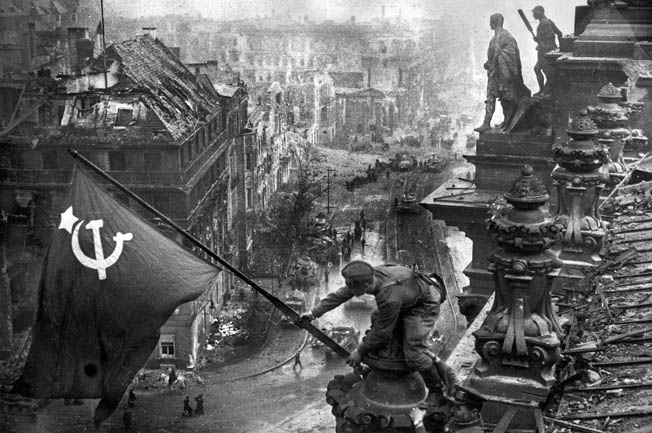
“SS Traitors are Extending the War”
April 25 dawned cold and clear. The Germans were barely holding on, but the Soviets needed a break to bring up supplies. They turned the battlefield over to the air force, which spent the day strafing the defenders. The Germans abandoned their last bridgehead south of the Teltow Canal. Soviet tanks slugged it out with the Muncheberg Panzer Division at Tempelhof Airport amid the carcasses of wrecked FW-190 fighters.
The Nordland Division was now barely a regiment in size, but it and the Charlemagne Division fought on. Across the city, anti-Hitler resisters scrawled graffiti to counter the official demands for continued resilience, saying, “SS traitors are extending the war.” SS parties hunted for the graffiti artists amid the ruins.
That evening, the French SS men, with 100 Hitler Youth assigned to them, faced a night Soviet tank attack. With determination, Panzerfausts, and a three-man machine-gun team from the Reich Labor Service, the French held the Halensee Bridge against all comers for 48 hours.
Meanwhile, the German civil administration continued to crumble. The German Foreign Ministry told its overseas missions to stop sending reports to Berlin—nobody could receive or answer them. The main German radio station went off the air.
But the big news on the 25th was a climax to the war—the meeting of Soviet and American troops at Torgau on the Elbe River. Germany was now divided in two. Unable to hold on to the Oder much longer, Heinrici ordered his men to start retreating to the west. For doing so, Hitler ordered Heinrici fired. By the time a replacement commander could be found, Army Group Vistula had disintegrated.
Goebbels’s Panzer Bear
On the 26th, the Soviets resumed their offensive, and Weidling’s weary men continued to fire and fall back. General Gustav Krukenberg, commanding the Nordland Division, set up his tactical headquarters in the Kroll Opera House, using a throne-like armchair from the former royal box as a bed to grab a couple of hours of sleep.
The early hours of the 26th saw a thunderstorm and heavy rain, which put out some of the fires raging in Berlin. Civilians lined up for food, resuming their places or taking those of dead ones after a burst of shellfire shredded the ranks. Citizens greeted each other by saying, “Survive” instead of “Sieg Heil.” German troops were impressed by the courage with which women lined up for water at pumps and carried buckets through shell and sniper fire back to their homes. A working radio station called for women to pick up weapons and join the men at the barricades, but few actually did, beyond some SS auxiliaries.
Looting was rampant, both Soviet and German. Law abiding citizens, all desperate, stormed into abandoned shops, seizing goods, which they then traded for food. Those trapped behind Soviet lines found themselves victims of robbery and rape by advancing Russians. Some of the worst rapists and plunderers were second-wave Russians, often freshly released POWs. Women as young as 14 and as old as 60 were savagely victimized. Ilse Antz and her family, hiding in their cellar, suffered repeated brutal rapes at Soviet hands and stayed in their cellar from April 24 to May 4, afraid to emerge.
This fear, fueled by Goebbels’s Panzer Bear, the combat paper for the defenders of Berlin, kept the Germans fighting. So did the occasional radio broadcast or announcement that Wenck’s army was riding to Berlin’s rescue.
The Battle of Berlin Shifts to Street Fighting
The Waffen SS did not rely on makeshift barricades to halt the attackers but put riflemen in buildings’ upper floors, higher than the Soviet tanks could raise their turrets. Panzerfaust crews deployed in cellars and rubble to knock out Soviet tanks. The Russian solution was to mass machine gunners on the sides of their tanks to pour automatic fire into open windows or to cover tank treads with bedsprings and other metal so that the Panzerfaust shells would bounce off.
Soviet urban fighting tactics were highly developed, based on their experience at Stalingrad. With satchel charges, submachine guns, and even pick-axes, the Soviets fought from house to house and room to room, hurling grenades through holes in walls to silence defenders. Flamethrowers and dynamite aided the Soviet advance.
The Soviets were indifferent to Berlin’s 2 million civilians, winkling them out of cellars at gunpoint, lining them up, and seizing watches and other goods before separating out women for rape.
Even so, the Soviets had trouble—many officers were inexperienced. The relentless advance wore troops down and made them exhausted and sloppy. Mortar fuses were set incorrectly and blew up in the tubes. Soviet troops who tried to hurl German potato masher grenades at their previous owners sometimes disabled themselves instead.
“Berlin Remains German”
The morning of the 26th began with a massive bombardment. The Muncheberg Division’s battle for Tempelhof finally ended with the Germans withdrawing to the Tiergarten.
General Vasily Chuikov massed his 8th Guards Army on the Belle Alliance Platz, named for the Anglo-Prussian alliance that defeated Napoleon in 1815. Ironically, the defenders this day were French SS. Chuikov was determined to beat Koniev’s other armies to downtown Berlin, and his men stormed toward the Tiergarten, a park now churned up by shellfire. Chuikov hurled Katyusha rockets at the German defenders. Weidling and his staff, exhausted and sore, kept going on coffee and cigarettes, deep in the Bendlerblock, the Wehrmacht’s Berlin headquarters bunkers, not knowing if it was day or night.
In the evening, Weidling presented to Hitler his recommendation: break out of the city, and avoid further destruction and loss of life. Hitler vetoed it. “Your proposal is perfectly all right. But what is the point of it all? I have no intention of wandering around in the woods. I am staying here and I will fall at the head of my troops. You, for your part, will carry on with the defense.”
To that end, SS men scrawled new graffiti on walls, reading, “Berlin remains German.” A Soviet soldier saw one such artwork, and added, “But I’m already here in Berlin, signed Sidorov.”
Hitler’s Last Field Marshal
By now, the Russians were using heavy force against the slightest resistance. When a Panzerfaust took out a Soviet tank, the local Soviet commander would retaliate with a massive bombardment against the cellar or house. That could lead to odd consequences. The Soviets captured a small Panzerfaust group of French SS, and the Frenchmen convinced the Soviets they were not SS, but merely laborers called up into uniform. The Soviets did not know about SS blood tattoos, so they let the Frenchmen go.
Some Germans simply gave up. Volkssturm battalion leader Karl Ritter von Halt called together the last of his men in the Olympic Stadium and told them to go home. Half of the men were useless anyway—they had been issued Italian bullets for German rifles. “Letting them return home was about all there was left to do,” von Halt said. “It was either that or throw stones at the Russians.” Others simply deserted, shucking off their Volkssturm armbands and hiding in cellars to avoid both Russians and marauding gangs of SS fanatics, who shot suspected deserters.
That evening came one of the most grotesque moments of the battle. Hitler had received on the 23rd a telegram from Göring, off in Bavaria, asking if the Luftwaffe chief should take over leadership of the Reich. Hitler flew into a rage, seeing treason. He fired Göring and summoned General Robert Ritter von Greim to Berlin to be appointed field marshal and boss of what was left of the Luftwaffe. Greim flew to Staaken Airfield on Berlin’s edge, then transferred to a Fieseler Storch, flown by aviatrix Hanna Reitsch. The two tree-hopped to the small airstrip by the Brandenburg Gate, where Greim was wounded. He hobbled to the bunker to become Hitler’s last field marshal, ready to die in defense of Berlin.
Incredibly, Hitler sent Greim back to Bavaria with orders to mass the surviving Luftwaffe aircraft to fly back to Berlin. After the usual vegetarian dinner with Hitler, the crippled Greim and Reitsch flew back to Staaken and safety. Everyone in the Führerbunker, where the only conversation topic was how to commit suicide, was amazed by Reitsch’s feat. “Miracles can still happen,” Goebbels told everyone.
Defending the Citadel
Next day, the 27th, the German self-deceptions continued. General Hans Krebs, the chief of staff, who had served as military attaché to Moscow before the war, told Weidling and others that the Americans had only to cross 90 kilometers to Berlin to break up the Russian attack. Incredibly, senior and junior Germans still believed that the alliance between the Soviets and the West would crumble before Nazism fell.
The Germans now prepared to defend the Citadel, the center of Berlin, with its massive government buildings. The 503rd SS Heavy Panzer Battalion’s King Tiger tanks, some fresh from Berlin factories, dug in amid Walther Mohnke’s SS Liebstandarte infantry. Other defenders included some Latvian SS. Krukenberg set up his division headquarters in a subway train at U-Bahn station Stadtmitte. The train was stuck due to the lack of electrical power and had no telephone.
Grand Admiral Dönitz’s birthday present to the Führer had arrived in the form of a company of sailors and midshipmen, flown in earlier. Now they dug in around the Foreign Ministry, tearing up its gardens.
The German ammunition supply was now reduced to an improvised arsenal in the Reich Chancellery, mostly of Panzerfausts and weapons captured back in the glory days—French, Russian, Czech, Belgian, Yugoslav, even some British rifles and armored cars bagged at Dunkirk in 1940.
Against this the Soviets advanced slowly, bogged down by debris, rubble, and house-to-house fighting. They also took time to rape women. In Dahlem, Soviet troops stormed into Haus Dahlem, a maternity clinic full of nuns and pregnant women, and raped the whole lot. When a woman complained about the Soviet conduct, a Russian officer sneered, “It hasn’t done you any harm. All our men are healthy.”
Hitler’s Wedding
As the 12th and 9th Armies struggled to hook up and retreat to the Americans, the defenses of Berlin continued to crumble steadily. SS squads entered buildings flying white flags and shot down any men that could be found. On the other hand, General Werner Mummert, commander of the Muncheberg Panzer Division, ordered the SS death squads out of his division’s area and threatened to shoot executioners on the spot.
Exhausted German troops, unable to line up at water pumps, drank water directly from canals and tossed civilians out of air raid shelters and bunkers. Many of the civilians so displaced wound up in U-Bahn and S-Bahn tunnels.
On the 28th, the 3rd Shock Army advanced from the east on the north side of the Anhalter Canal, moving into sight of the famous Victory Column in the Tiergarten. The German defenders were now holding a strip less than five kilometers in width and 15 in length. Hitler Youth defenders clung to the Havel bridges. Colonel Hans-Oscar Wohlermann, Weidling’s artillery chief, stood in a gun platform atop the vast concrete flak tower at the Berlin Zoo. “One had a panoramic view of the burning, smoldering and smoking great city, a scene which again and again shook one to the core,” he wrote.
Now came a new problem for the Soviets—their two armies would collide with each other in the Tiergarten. It was critical to avoid a friendly-fire incident. Stalin solved it by assigning the Reichstag and the Reich Chancellery to Zhukov’s armies, much to Koniev’s chagrin.
Back in the Führerbunker came the latest soap opera. American radio announced that Himmler was negotiating with the Swedes to save concentration camp prisoners and possibly to surrender the German forces in the West. Hitler blamed his mistress’s brother-in-law, SS Brigadier Hermann Fegelein, and devoted much of the 28th to having him found, hauled to the bunker, court-martialed, and shot.
Late that same evening, Hitler summoned a local city council member, Walter Wagner, from his post as a Volkssturm man, to conduct a wedding ceremony, uniting Hitler with Eva Braun. After the near midnight ceremony, Hitler dictated his lengthy last will and testament to his secretaries, blaming the Jews for the failure of his historic mission. The will made Dönitz Germany’s Führer after Hitler’s death and Goebbels the new chancellor. Goebbels wrote out his own will, saying he and his entire family would commit suicide out of loyalty to the Führer. Half an hour after leaving the bunker, while returning to his post, Wagner was killed by Soviet shellfire.
Storming the Bridge Across the Spree
Meanwhile, the battle raged on upstairs, with the city turning into a scene of horror. As Soviet troops took over vast sections of Berlin, they broke into liquor stocks and raped any women at hand. Some women conceded themselves to Russian soldiers, hoping that by giving in to one man, he would protect them against other rapists. In areas still held by German troops, SS and Hitler Youth members would open fire on any house showing a white flag. Everywhere were the smells of decomposing corpses, charred flesh, and blasted buildings.
Now the 3rd Shock Army angled its drive on Moabit to seize the prison there and liberate the last few political prisoners. The Germans surrendered quickly, fearing retribution. Sappers searched through the prison for explosives and mines. From there, it was only 800 meters down to the Moltke Bridge over the Spree, and the 150th and 171st Rifle Divisions got the orders: seize the Reichstag and Reich Chancellery by May 1, communism’s sacred day.
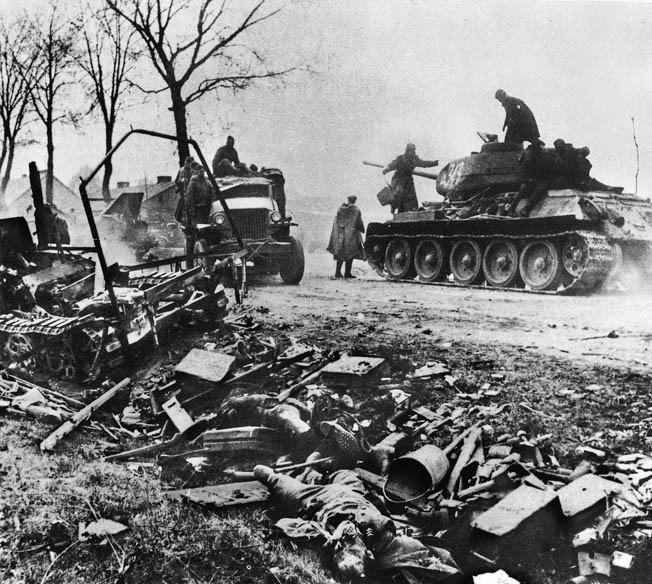
The attack went in on the afternoon of the 28th. The bridge was barricaded on both sides, mined, protected with barbed wire, and covered with machine guns and artillery. At 6 pm, the Germans blew up the bridge. The explosives failed. The bridge sagged, but was passable to infantry.
The Soviets stormed across, with artillery firing shells at the Germans at point-blank range. By midnight, as Hitler was marrying Eva Braun, the Soviets had a bridgehead across the Spree.
108 Tanks Destroyed
During the early hours of the 29th, the 150th Division stormed the Ministry of the Interior, known as “Himmler’s House,” battling the SS Reichsführer’s personal escort battalion. The immense building was a tough fortress to storm, and the Soviets, for once, seemed lethargic in advance—nobody wanted to be the last man to die in the last battle.
“Sunday April 29,” wrote Martin Bormann in his diary. “The second day which has started with a hurricane of fire.” Everyone was waiting for Hitler to commit suicide.
Outside, the Soviets resumed their assault on the Citadel, bringing up heavy howitzers to blast holes in “Himmler’s House” at close range, and doing so at Gestapo headquarters on Prinz Albrecht Strasse. German troops were told lies to keep them fighting—that the Führer was negotiating a cease-fire with the British and Americans and that Wenck’s army was coming. Krukenberg also gained reinforcements—100 elderly police officials.
Everyone was too exhausted to care about messages from the Führerbunker. Defenders would not wake up unless they were shaken vigorously. “Tank-hunting,” wrote a defender, had become a “descent into hell.” Still, they had done their job. The French SS had knocked out about half of the 108 tanks destroyed in that sector. A French battalion commander explained that they fought because they had one idea in their heads: “The Communists must be stopped.” Others said they were trying to provide an anti-Bolshevik example for the future.
“That Building is the Reichstag!”
Chuikov’s 8th Guards Army attacked northward across the Landwehr Canal into the Tiergarten. Some men swam the canal, while others used sewer entrances to outflank the defenders. They took the Potsdamer Bridge through a ruse, attaching oil soaked rags and smoke canisters to a T-34 tank. As it crossed the bridge, the Germans thought they had hit it and ceased fire. By the time the Germans knew what was going on, the Soviets were on top of them.
The Germans were nearly at their last gasp. Weidling summoned his staff to discuss a breakout on the night of the 30th.
At dawn that day, the Soviets had begun a major attack on the Reichstag, the chosen symbol of Nazi Berlin. The 150th Rifle Division was tabbed for the job. On the first floor of “Himmler’s House,” a battalion commander, Captain Neustroev, tried to orient himself, saying to his regimental commander, “There’s a gray building in the way.”
“Neustroev,” the regimental commander said, exasperated, “That building is the Reichstag!” Neustroev did not realize he was now only 400 meters from the primary Soviet objective of the entire war.
The German defenders of the Reichstag included the SS Leibstandarte, and they had turned the battered building into a fortress. Directly in front of it lay a tunnel that had collapsed from bombing and had been turned into an antitank ditch, a formidable water obstacle.
After breakfast, the first Soviet company charged out at 6 am. They were immediately cut down by a “hurricane of fire from the enemy” from both the Reichstag and Kroll Opera House. The 207th Division stormed across the Moltke Bridge to attack the Opera House, and Soviet guns opened fire. More self-propelled guns and tanks clattered across the Moltke Bridge.
With heavy artillery and tank fire supporting them, the 150th Rifle Division reached the water-filled tunnel just after 11 am. But when they tried to get over the ditch, they came under more heavy fire from Berlin Zoo flak bunkers and their heavy guns. The Soviets had the 171st Rifle Division clean out the buildings on the left along the Spree, while some 90 guns, including 203mm howitzers, blasted away at the Reichstag, which somehow survived all the shelling.
Red Banner Over the Reichstag
Soviet shells rained down on the government district, defended by about 10,000 men, including a large number of foreign SS. They were trapped, with Koniev’s tanks to the south and Zhukov’s men all around them, and fought with the courage of despair. Without much food, when someone brought in a frightened Ukrainian POW, the French SS grabbed his little canvas ration bag and devoured its contents.
As the battle raged into the afternoon, the long trail came to an end for Adolf Hitler. In an early morning briefing, Mohnke told the Führer that the situation was hopeless and the Citadel would fall in two days. With that information in hand, Hitler summoned his staff and gave orders for the disposal of his corpse and that of his wife. Sometime after 3 pm, he and Eva Braun shot themselves and took poison in the bunker. Their remains were carried up to the surface and cremated with little ceremony.
With that done, Goebbels summoned Weidling to the Chancellery to tell him to arrange an armistice—but not to tell anyone that Hitler was dead. “I was deeply shocked,” Weidling wrote. “So this was the end.”
Meanwhile, the battle went on. A Soviet NKVD (Intelligence Agency) team driving through the city found it could not work through the shelled streets and got lost. The secret policemen had to ask passing civilians the directions to the Citadel. The German women answered, “When will this nightmare end?” Women in apartments, fearing Soviet retribution, tore up photographs of husbands, brothers, or fiancés in military uniform, as well as the ubiquitous photographs of Hitler and the top Nazis.
At the Reichstag, the heavy guns thundered away, and Neustroev continued to attack. Everyone wanted to raise the Red flag over the Reichstag, and the battle was fiercely fought, going from room to room. The German defenders, armed with Panzerfausts, fired them from stone balconies over the Russians’ heads. Casualties were terrible, but the Soviets, with their usual combination of grenades and submachine guns, fought their way in, gunning down sailors, SS, and Hitler Youth. The battle degenerated into a rugby match style of fighting, with loose scrums of men slugging it out in halls.
A Soviet group with a banner slipped past, struggling to race for the Reichstag’s roof. They were pinned down by machine-gun fire and tried again, supposedly unfurling the flag from a Reichstag cupola at 10:50 pm. Even so, the fighting raged on for the battered building. Junior Sergeant S. Scherbina was named as the man who raised the Red flag over the Reichstag, but a number of Soviet soldiers did the same thing.
That night Berlin was lit only by the flames of burning buildings. A group of SS soldiers tried to hide in the Hotel Continental, but the women and children already there gave the foreign SS men hard looks. For once, fighting soldiers were pariahs. They were no longer defenders of the homeland, but a danger to civilians in hiding. When wounded men reached field hospitals, nurses confiscated weapons so that Soviets coming in right behind them would have no excuse to shoot up a hospital.
“No Negotiations Except For Unconditional Capitulation”
At 10 pm, General Krebs contacted General Chuikov to arrange a cease-fire. At 4 am, Krebs was ushered into Chuikov’s tactical headquarters, a semi-suburban house on the west side of Tempelhof.
“What I am about to say,” Krebs began, “is absolutely secret. You are the first foreigner to know that on April 30, Adolf Hitler committed suicide.”
“We know that,” Chuikov replied in a straight lie, seeking to disconcert his opponent.
Krebs read out Hitler’s political testament and Goebbels’s request for “a satisfactory way out for the nations who have suffered most from the war.”
Chuikov then rang Zhukov, who called Stalin, waking him up.
“Now he’s had it,” Stalin commented on hearing of Hitler’s death. “Pity we couldn’t take him alive. Where’s Hitler’s corpse?”
“According to General Krebs, his body was burned,” came the reply.
“No negotiations except for unconditional capitulation, with either Krebs or any others of Hitler’s lot. And don’t ring me until the morning if there is nothing urgent. I want to have some rest before the parade,” grumbled Stalin.
Zhukov had forgotten that the next day was May 1, and Moscow would stage a huge May Day parade.
Back in Berlin, Chuikov, joined by Zhukov’s deputy, General Vasily D. Sokolovsky, tried to squeeze an unconditional surrender out of Krebs. But Krebs was wheedling, trying to get the Soviets to recognize the new government under Dönitz. Chuikov saw this as the Germans playing tricks to avoid the inevitable.
Sokolovsky rang Zhukov and said the Germans were being very tricky. “Krebs declares that he is not empowered to make decisions concerning unconditional surrender. According to him, only the new government headed by Dönitz can. I think we should send them to the devil’s grandmother if they don’t agree to unconditional surrender immediately.”
“You’re right,” Zhukov answered. “Tell him that if Goebbels and Bormann do not agree to unconditional surrender, we’ll blast Berlin into ruins.” He set a deadline of 10:15 am.
No answer was received. At 10:35 am on May 1, the 1st Belorussian Front unleashed “a hurricane of fire” on what was left of the city center, breaking the uneasy truce and quiet.
Surrender of the Zoo and the Citadel
As the battle resumed, Mohnke told Krukenberg that he was worried that Soviet troops might enter the U-Bahn tunnels and pop up behind the Reich Chancellery. To forestall that, he sent a group of Nordland sappers to blow up the S-Bahn tunnel under the Landwehr Canal. This explosion set off an incident that remains contentious to this day—a flood in the U-Bahn tunnels that killed anywhere between 50 and 15,000 Berliners and wounded soldiers in hiding. Most estimates are that 100 died, but its a certainty the flooding caused fear and consternation among already weary and shocked people. Some of the bodies that washed up and were buried in the old Jewish cemetery in the Gross Hamburger Strasse included a number of SS men.
At the Reichstag, the fighting raged on. One Soviet soldier who tried to throw a German grenade back missed his target and the grenade bounced off a door lintel, exploding at the Russian’s feet and ripping them off.
The firing did not die down until late afternoon, when Germans still in the building’s cellars asked to negotiate with a senior officer. Neustroev pulled on a colonel’s sheepskin coat and went into the basement, and that did it. Some 300 ragged, dirty, unshaven Germans began to pile out of the cellar, hands in the air. Nearly 200 had been killed, and 500 lay wounded in the nearby dressing station.
Next up, the vast Zoo flak tower. The 1st Guards Tank Army and Chuikov’s 8th Guards Tank Army clanked toward the tower, with the 79th Guards Rifle Division leading the way. The fortress was too tough to storm, so the Russians sent in German POWs with a pencil-written ultimatum, saying, “We propose that you surrender the fortress without further fighting. We guarantee that no troops, including SS and SA men, will be executed.”
A POW returned with a note saying the bunker would surrender at midnight.
Other fortresses were still holding out—the Citadel of Spandau was one, surrounded by bridges over the Havel. Again the Russians sent in a delegation. After climbing a rope ladder, lengthy negotiations, threats, and cajoling, the SS defenders surrendered at 3 pm on the dot, yielding up the German Army’s gas warfare center and its secrets of Tabun and other poison weapons, which Stalin very much wanted.
The German Breakout Attempts
On May 1, the 9th Army made one final effort to break through Koniev’s last barrier, where 12th Army had also managed to hold on to an escape hatch to the Elbe. The last four Panther tanks of the Kurmark Division turned up just in time to force the Soviets to retreat, and 25,000 men of the 9th Army (out of its original complement of 200,000), some near collapse, were able to cross the Elbe to American captivity, .
In Berlin, the fighting continued. Mohnke was down to his last Tiger tank. At the Führerbunker, where everyone was planning their escape, Goebbels’s wife poisoned all six of her children. After that, Joseph and Magda Goebbels also shot themselves. Their remains were cremated on the spot.
At 9:30 that evening, Hamburg radio announced what had been kept secret for a day and a half, that Hitler was dead, having fallen fighting “at the head of his troops.” Very few people in Berlin heard this news, as there was no electricity in the capital city.
Now the Battle of Berlin degenerated into a fight to enable Martin Bormann and the other bunker inhabitants to attempt the great escape. Very few made it out. Most, including Mohnke, were caught by the Soviets, and Bormann appears to have been killed in a skirmish with Russian troops.
Krukenberg plotted an escape as well but came under heavy shell fire. He had no choice but to retreat. He and a colleague put on some overalls and he hid out for a week in a friend’s apartment until he had no choice but to surrender.
Zhukov, on hearing of breakout attempts, ordered a maximum alert. Even so, shortly before midnight, the remaining vehicles of the Muncheberg and 18th Panzergrenadier Divisions began their breakout from the Tiergarten westward, heading through the Olympic Stadium and Spandau. They rolled over the Charlottenbrucke, the Havel bridge held by Hitler Youth detachments, in heavy rain and under heavy artillery fire, which killed many people, including Himmler’s younger brother Ernst, a radio technician. The bridge massacre was horrific, but the Germans had enough troops to push the Soviets aside and break through. The Soviets continued to hammer at the breakout force, and only a few vehicles reached the Elbe and relative safety. Most of the rest were wiped out.
Counting Casualties
At 1 am on May 2, staff officers woke Chuikov up to tell him that 56th Panzer Corps was again requesting a cease-fire. Weidling was told to come under a white flag to the Potsdamer bridge. He arrived there at 6 am and was taken to Chuikov’s headquarters to prepare an order to his men to capitulate.
In the Führerbunker, Krebs and another key Hitler satrap, General Wilhelm Burgdorf, committed suicide with their Luger pistols, sitting side by side. So did the commander of the Leibstandarte guard in the bunker, Captain Franz Schaedle. As the Soviet troops reached the Reich Chancellery, they found it a deserted wreck. Russian troops scrawled their names on the concrete walls.
An estimated 100,000 civilians perished in the battle, 20,000 of them to heart attacks, 6,000 in suicides. Rape estimates range anywhere from 20,000 to 100,000. Abortions, normally illegal in Germany, were allowed for months after the war, but there is no figure on how many were performed. The Soviets reported having smashed 90 divisions, taking 480,000 POWs, and capturing 1,500 tanks and self-propelled guns, 4,500 aircraft, and about 11,000 guns and mortars. The Soviets also reported at least 100,000 killed in the drive from the Oder to Berlin, 2,000 tanks lost, and 500 aircraft.
At the Zoo flak tower, the deadline to surrender had come and gone, but the Soviets still waited. Now that Weidling had made it official, the Zoo tower’s defenders emerged from their lairs, as did thousands of Berliners, who had been hiding from the horrors.
With the battle over, the rape and looting died down. Soviet troops carried off everything they could, but the NKVD teams began to restore order among the troops, who turned to clearing streets, restoring sewer lines, and scrawling their names on the wrecked Reich Chancellery. In July they were joined by American, British, and French occupation forces, who took over their zones of Berlin, ending the Third Reich and beginning the Cold War.
Ilse Antz emerged two days after the surrender, on May 4, into a deathly quiet Berlin. “At first, unaccustomed to the brightness, I saw nothing but black circles before my eyes,” she said later. “But then I looked around. The sun was shining, and spring had come. The trees were blooming; the air was soft. Even in this tortured and dying town nature was bringing back life. Up to now nothing had touched me; all emotions were dead. But as I looked over at the park, where spring had come, I could not control myself any longer. For the first time since it had all started, I cried.”

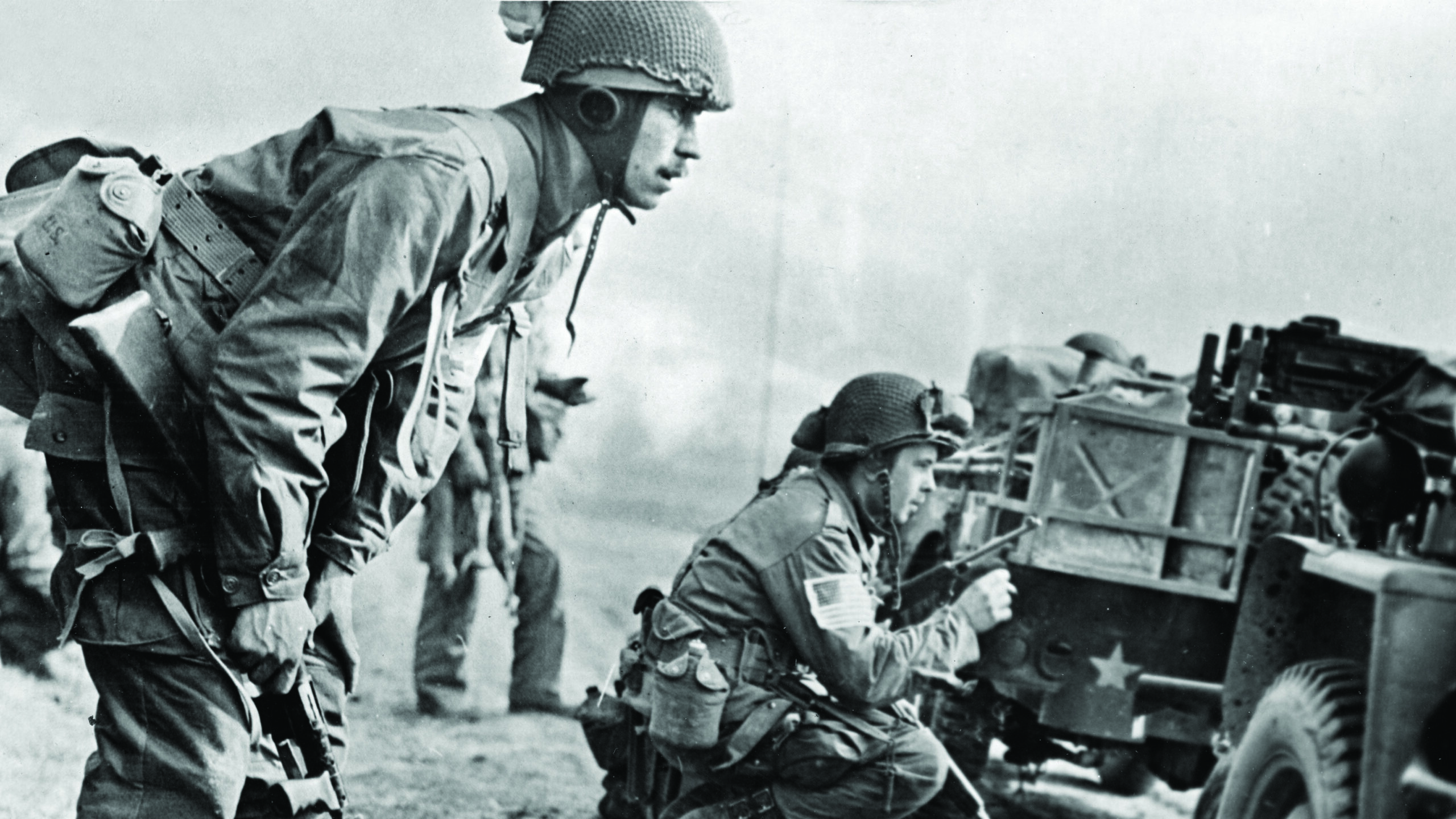
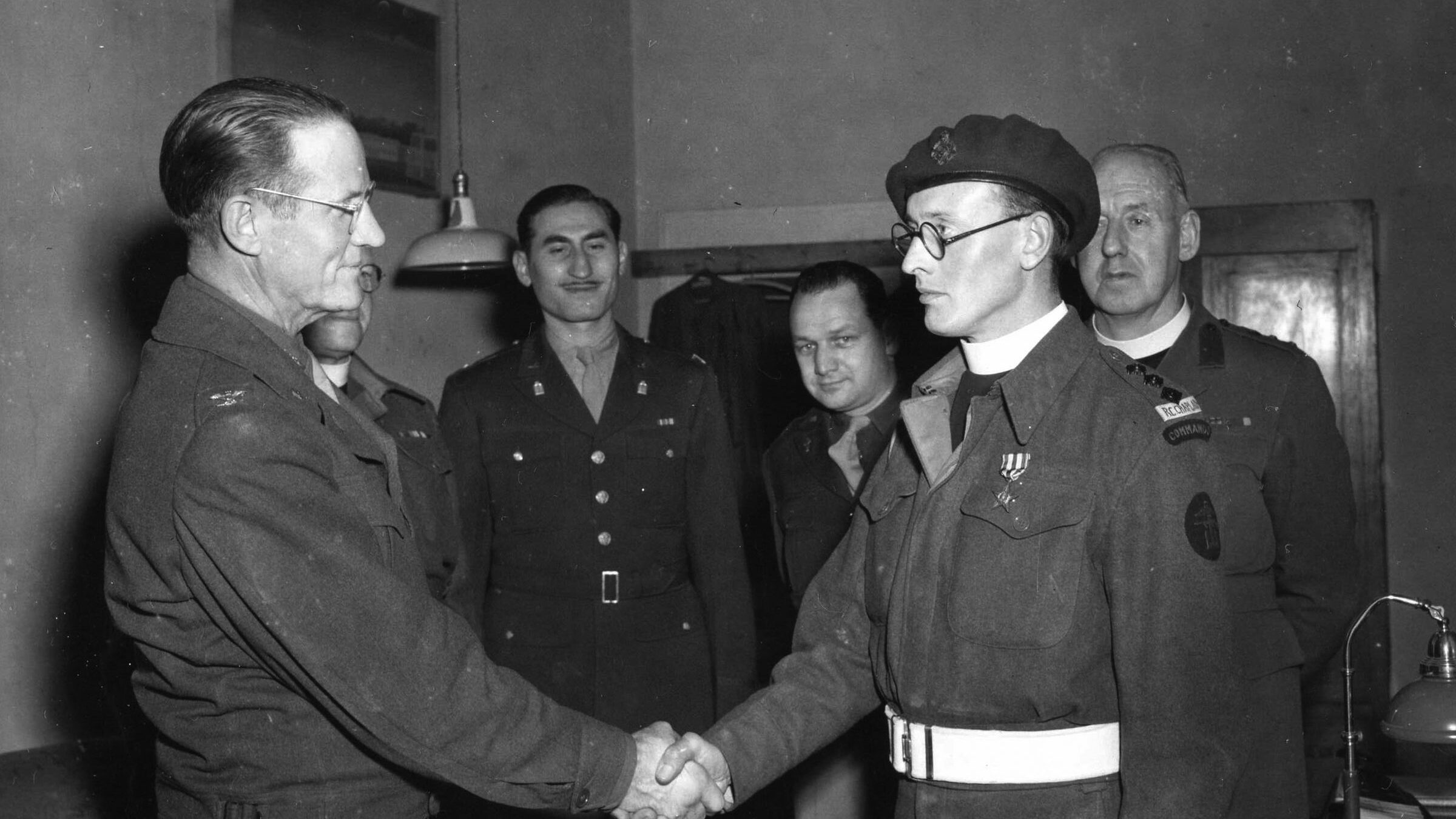
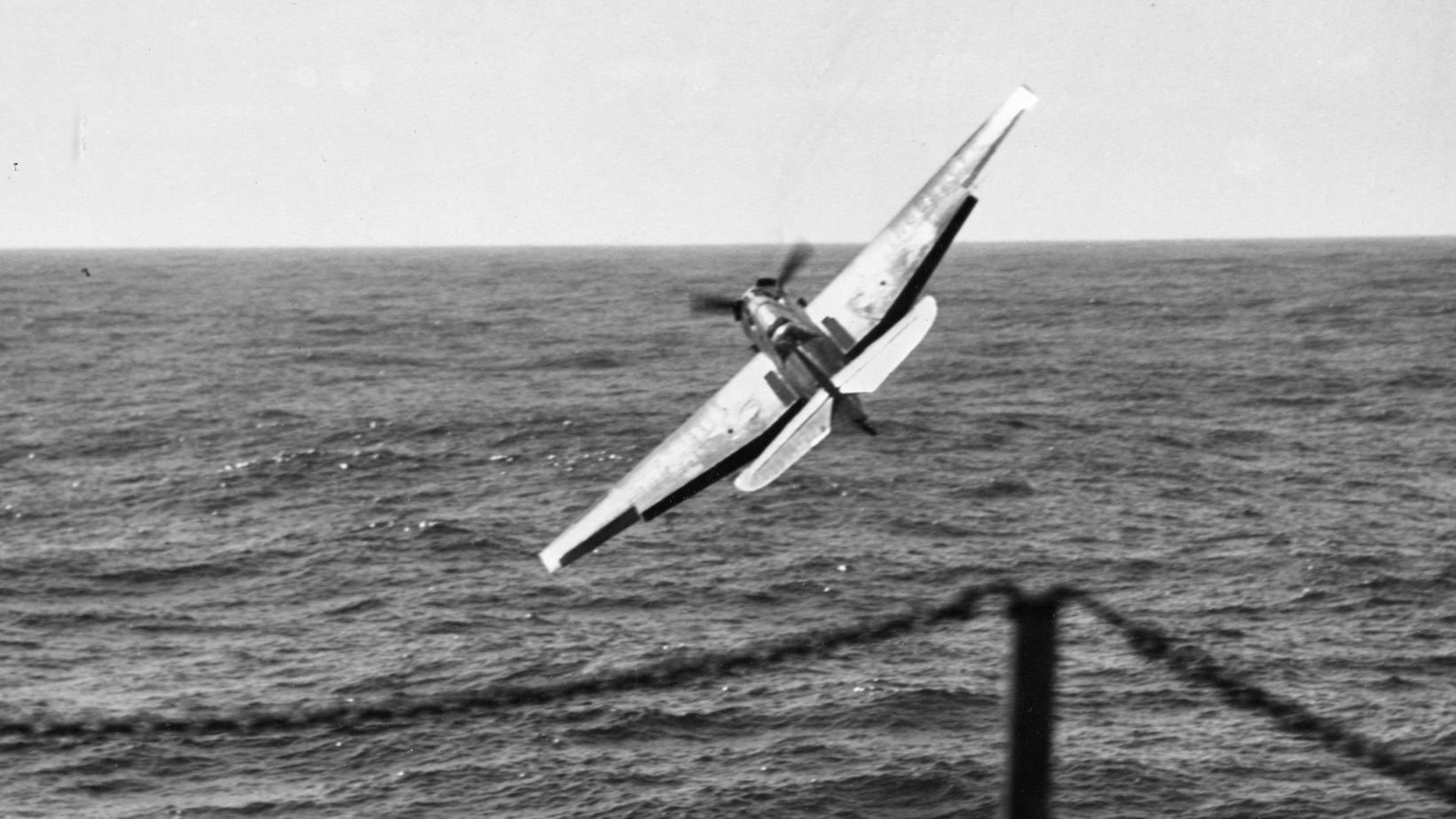
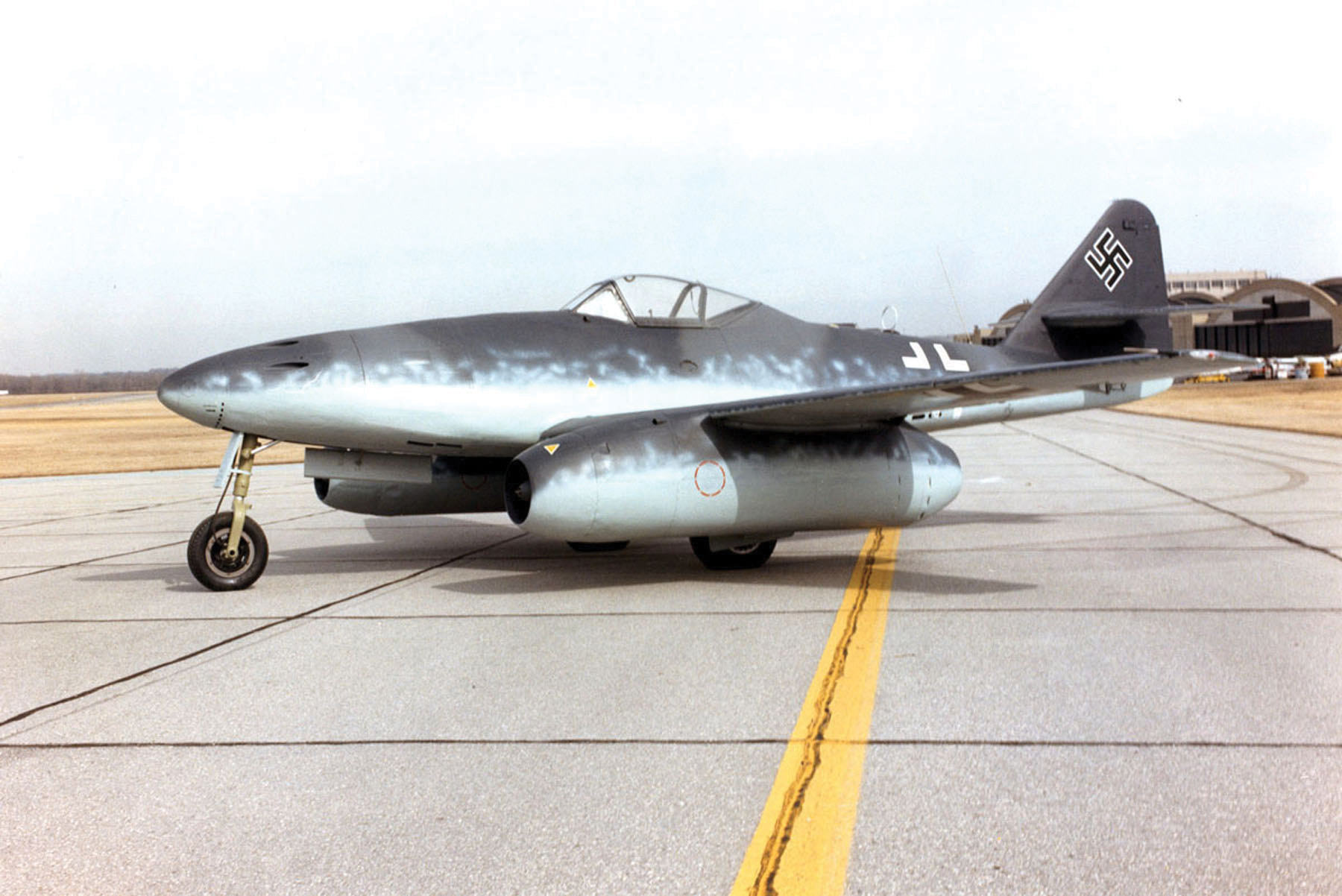
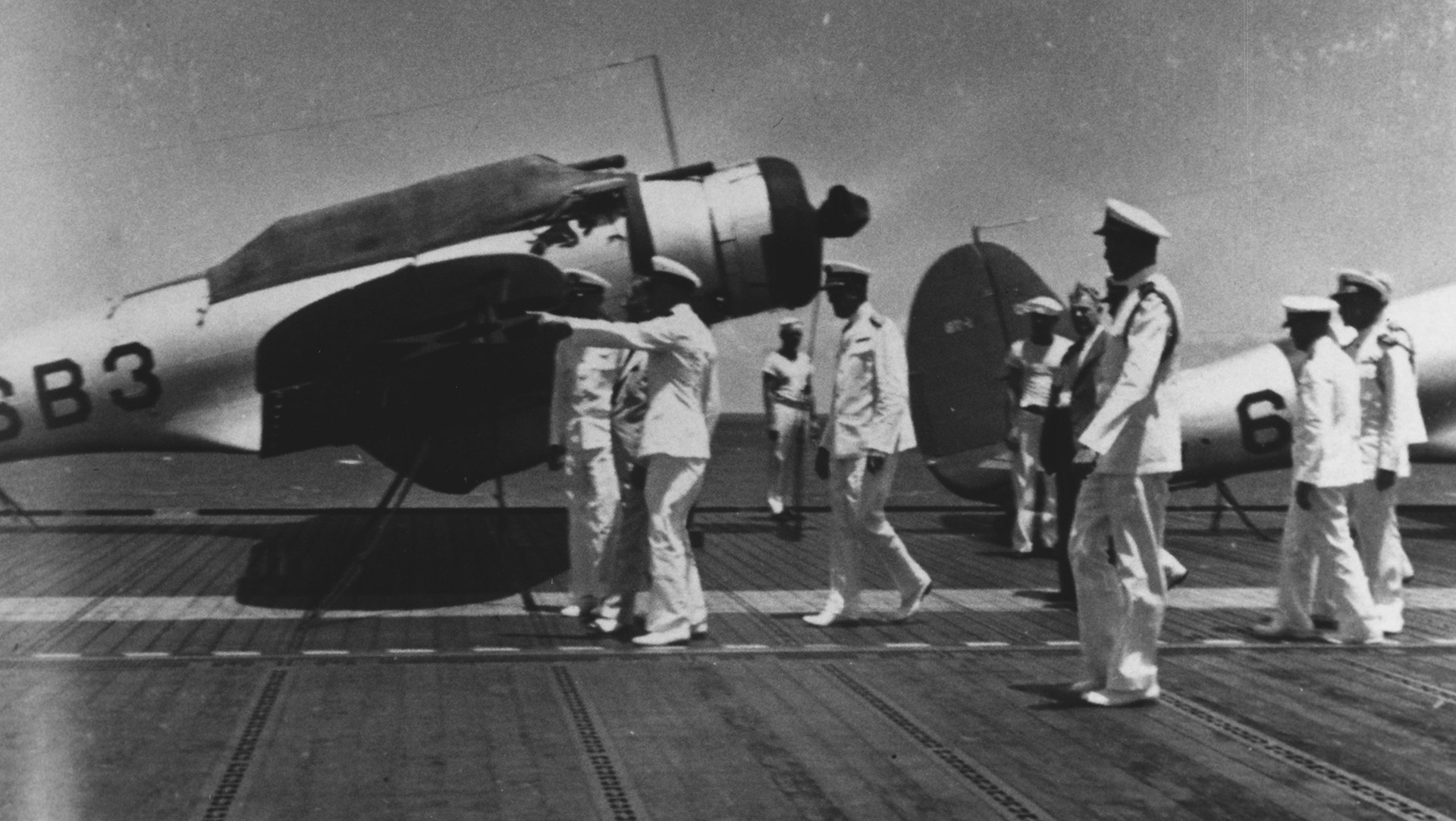
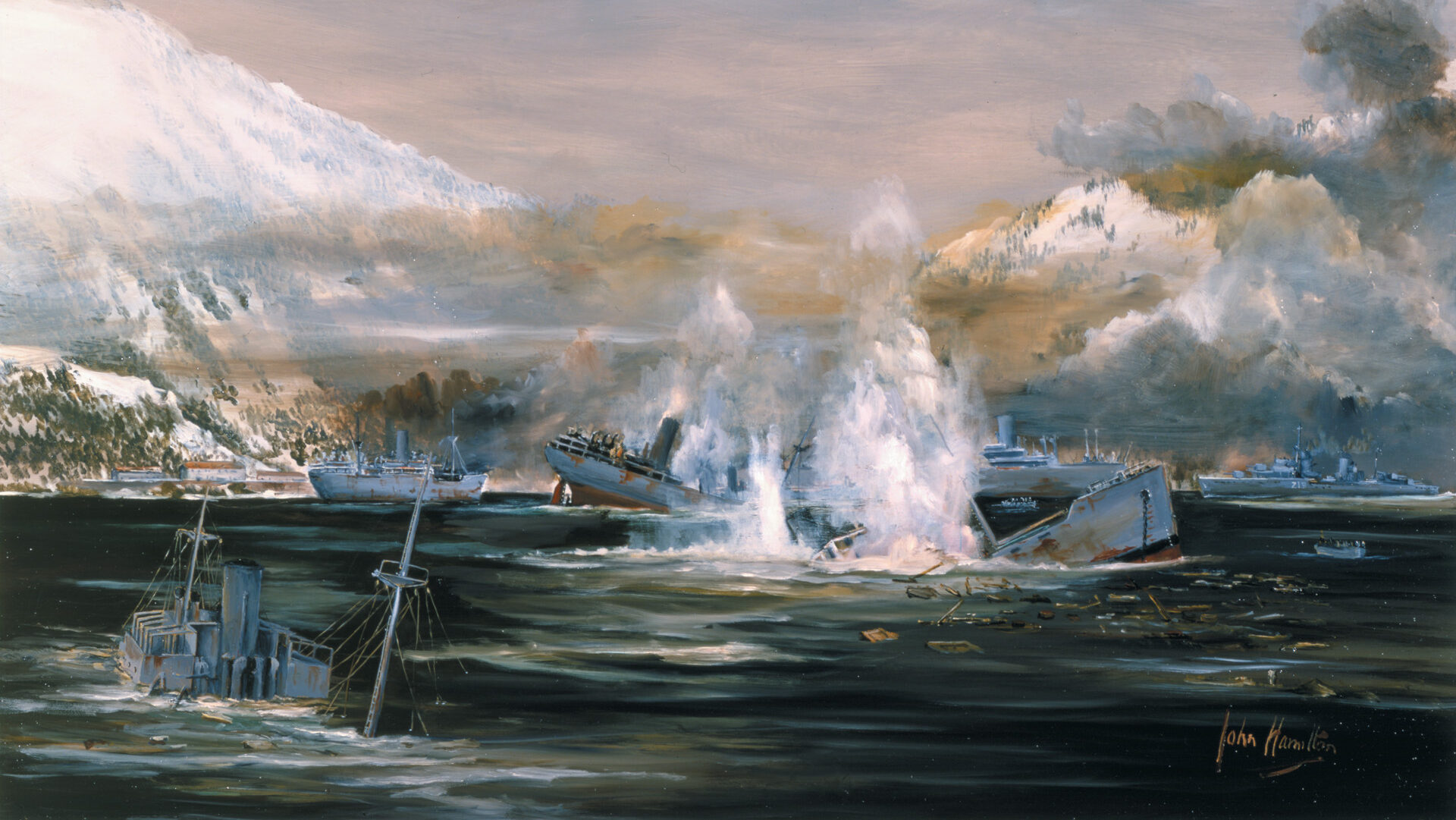
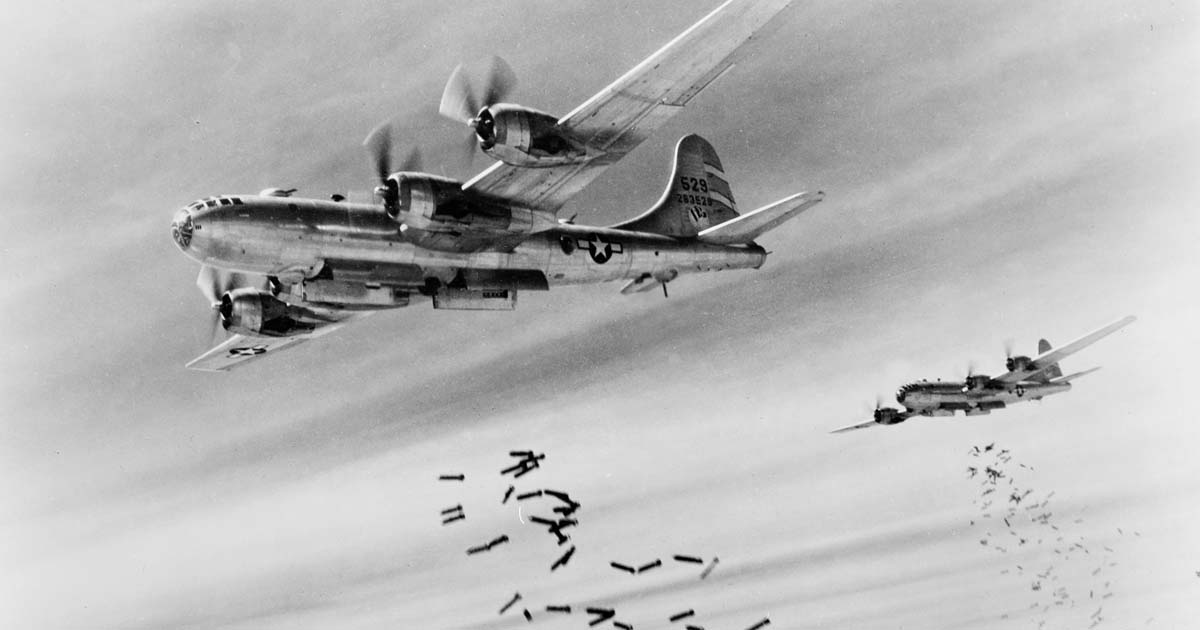
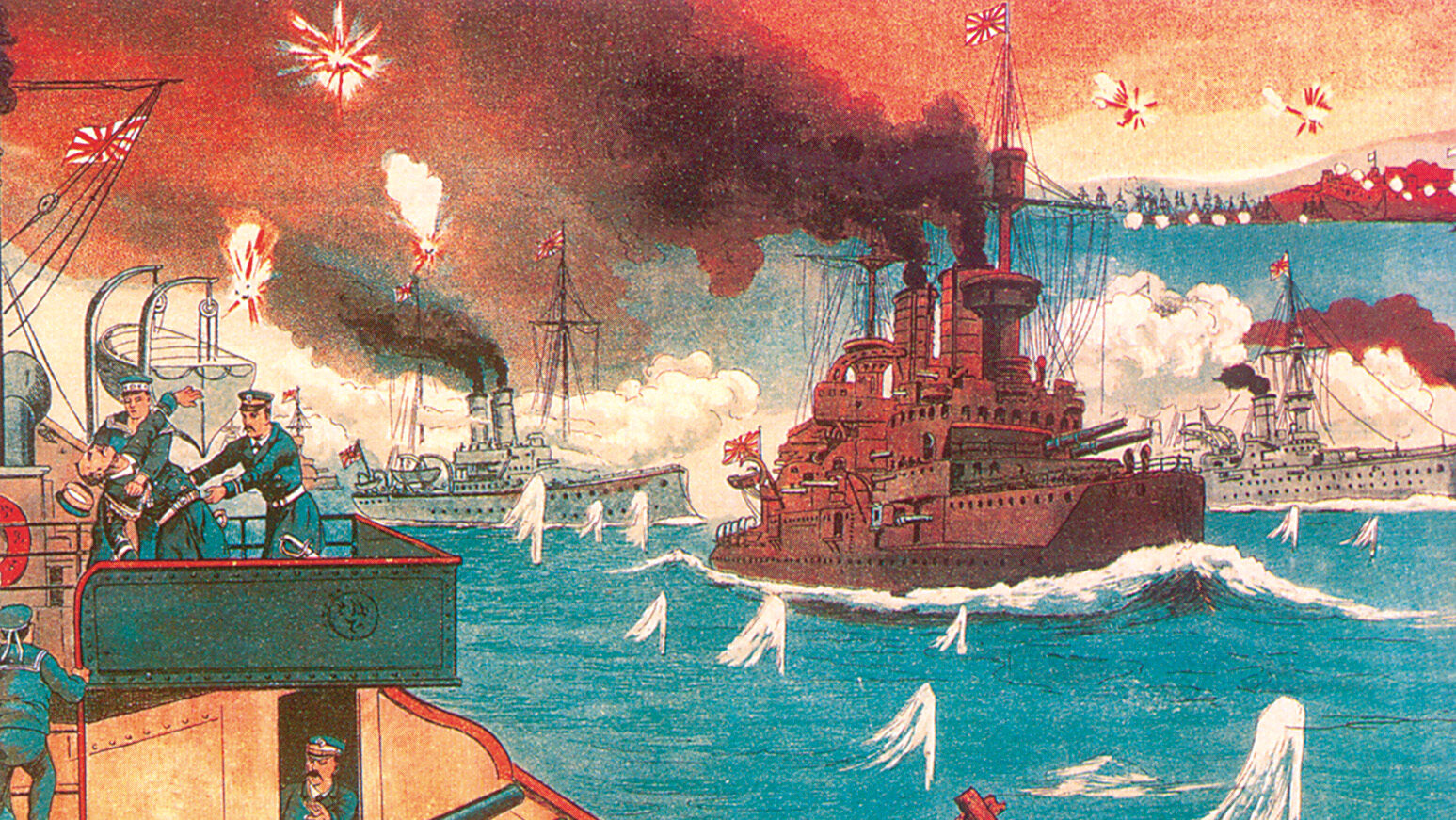
Well researched, I appreciate the first hand accounts and quotes, as well as the numbers you used to put perspective on the Battle of Berlin. Enjoyed reading and learning from this non-fiction. Good job!
Otherwise excellent article, with NO MAPS!!
Other than a minor typo (the numbers for the German forces’ tanks and artillery should be swapped), it was a pretty good article.